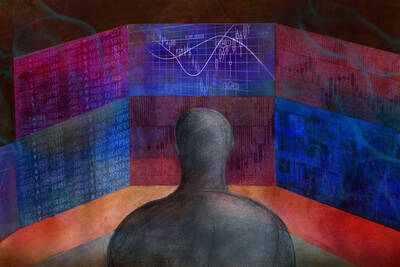Say Google is trading at $410 and over the next few weeks the price drifts up to $500 without there being any news about Google’s future prospects. Why did the price go up relatively slowly? A standard view of how stock prices move—that investors act rationally on information as they get it and that markets are efficient—does not account for price drift.
The answer lies in investors’ differing opinions and beliefs about the value of a stock, but also—and perhaps more significantly—about how other investors value it, according to Snehal Banerjee (Assistant Professor of Finance at the Kellogg School of Management) and his co-authors, Ron Kaniel (Associate Professor at the Fuqua School of Business, Duke University) and Ilan Kremer (Associate Professor of Finance at the Graduate School of Business, Stanford University). Their work modifies our understanding of how market participants learn to value assets.
There is good evidence that the more investors’ opinions diverge, the stronger the price drifts—the asset’s price continues to move in the same direction. But why? A first, casual intuition would be that the price moves slowly because of imprecise information—noise. Yet the authors demonstrate that this intuition is incorrect. Since prices are themselves sources of information about what others believe, investors should be able to quickly update their views to reflect all the information available to the market—and as a result there would be no price drift.
Dueling Models
Banerjee explains that there are two schools of thought that characterize investors’ beliefs and decisions in the market: rational expectations and differences of opinion. Both see investors as having different views—or valuations—of a given asset, and both view prices as aggregating the different views as part of the trading process.
According to the rational expectations school of thought, people’s disagreements about an asset’s value quickly disappear when their differing views become common knowledge in the trading process. This is because each investor believes the disagreement is due to the private information of other investors, which is relevant for his own valuation.
In the example of the Google stock, if each investor came to his or her own target valuation of $500 but is uncertain of this valuation, each might be willing initially to pay only $455. As the investors learned that others’ valuations were also around $500, they would be even more certain and would likely pay more, perhaps $480. If they learned that the target valuation for all investors was $500, each would be extremely confident in their valuation, and as a result the price would quickly jump from $410 to $500 and then generally stay there. There would not be a slow change in prices—no drift. And the price itself would provide clear information for the investors that everyone else valued Google at $500 as well. So in the rational expectations view, Banerjee explains, “prices aggregate everyone’s information, and investors use the information in these prices. As a result, their trades correctly reflect the total information in the market, prices do not underreact, and there is no drift.”
The other school, differences of opinion, assumes that investors agree to disagree because each investor believes that the others are simply wrong in some way. In its simplest form, however, this is not enough to explain price drift. In particular, this assumes that investors’ initial differing views are common knowledge. This common knowledge of others’ beliefs prevents price drift, since prices reflect this knowledge accurately. Moreover, this assumption is unnatural. Since investors are often unsure about an asset’s fundamentals, how likely are they to be sure about others’ opinions of these fundamentals?
A New View and an Old Intuition
The authors propose a modified differences of opinion model. They assume that investors are unsure about others’ beliefs. Investors trade based on their first-order beliefs about the fundamentals and on their higher-order beliefs about what other investors think about the fundamentals, what other investors think other investors think, and so on. As Banerjee and his co-authors remind us, such levels of beliefs were first described by British economist John Maynard Keynes in 1936.
Keynes famously compared investors to people who participated in a newspaper-run beauty contest. Competitors were to pick the six prettiest out of one hundred faces, based on the average preferences of all the competitors. A good competitor would choose not the faces he himself thought the prettiest but rather the ones, in Keynes’ words, “which he thinks likeliest to catch the fancy of the other competitors, all of whom are looking at the problem from the same point of view.” Beyond this level, competitors would try to anticipate what the “average opinion expects the average opinion to be.” And beyond that, Keynes thought, there were fourth and even fifth degrees of anticipating others’ opinions. These degrees of anticipation exactly correspond to how an investor anticipates other investors’ opinions in the differences of opinion model described by Banerjee and his co-authors.
Recall that in our Google example, the stock is trading at $410. In the authors’ model, each investor independently comes to an average target valuation of $500. Each uses only his or her own information and acts based on that. Even if all the investors believe that $500 is a fair valuation, each investor is uncertain about this valuation and may be willing to pay only, say, up to $455. Unlike the case of rational expectations, each investor does not use the information about others’ valuation in the price to update his own valuation, and so does not trade more aggressively. So the price of Google fairly quickly goes up from $410 to $455, and then only slowly to $500 if these investors’ analyses are generally correct. Investors in these circumstances, Banerjee says, will “trade less aggressively, and so the price seems to underreact to the total information available to the market. This underreaction is what causes a drift.”
Price drift occurs because investors agree to disagree not only about the asset’s fundamentals, but also about the average valuation by other investors. They do learn from prices during trading—just as in the rational expectations model—but, the authors emphasize, “only to update their beliefs about the average opinion,” not to eliminate their own conceptions (or misconceptions) about fundamentals. In this modified differences of opinion model, investors trade based on their views of the fundamentals and on their beliefs about others’ opinions—the average opinion. They know that there are differing opinions about an asset’s value, but they ignore others’ views in updating their own valuations.
Slow aggregation of information leads to price drift and that occurs only when there are differing opinions that are not quickly corrected. Both the rational expectations model and the simpler differences of opinion model has investors correcting their analyses as opinions become common knowledge and prices convey information about others’ valuations. But when investors have differences of opinion about higher-order beliefs, this disagreement leads to price drift.
The authors’ findings emphasize why it is important to study how investors learn about others’ beliefs. “Our model,” Banerjee asserts, “is not just interesting theoretically but can actually help us see what is really happening in the real world of financial markets.”
Further reading
Keynes, John Maynard. 1936. The general theory of employment, interest, and money. London: Macmillan.
Banerjee, Snehal, Ron Kaniel, and Ilan Kremer. 2009. “Price drift as an outcome of differences in higher-order beliefs.” Review of Financial Studies, September, 22(9): 3707-3734..


